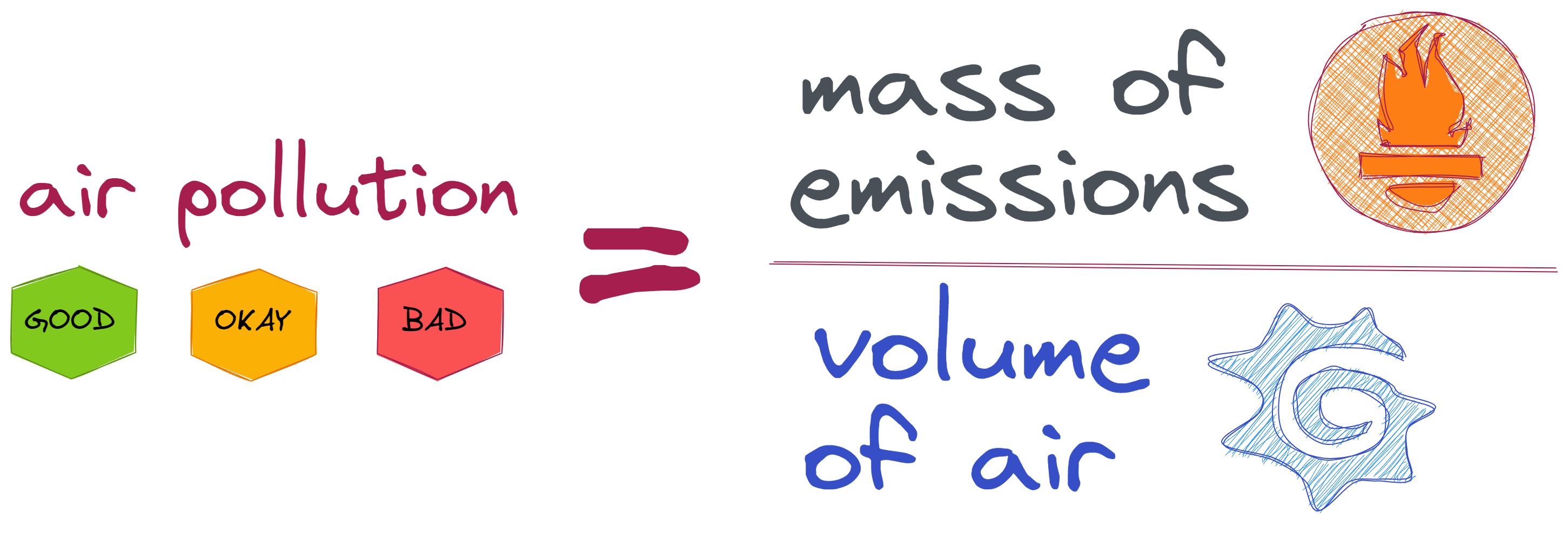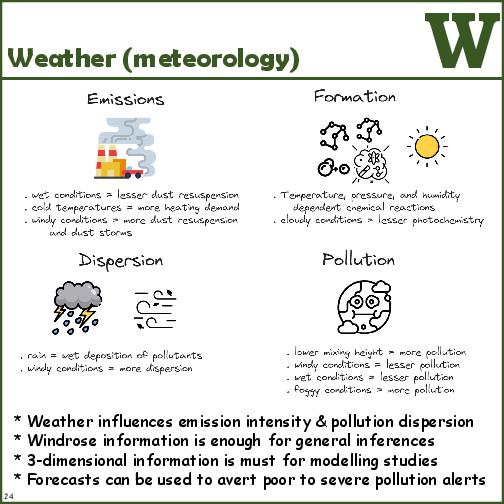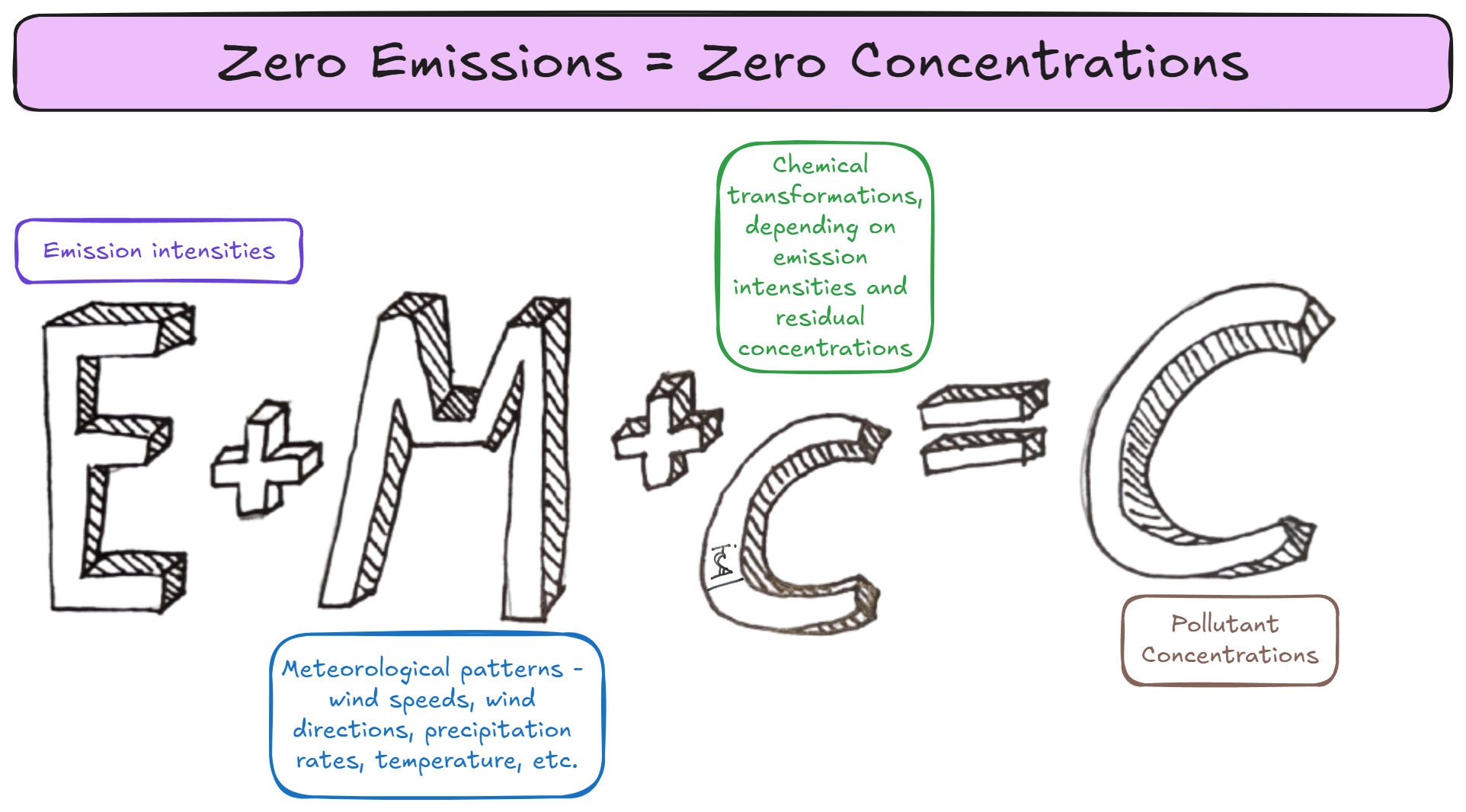
In the summer months, a higher volume of air means more room for lateral and vertical mixing, and vice versa for the winter months. For the same amount of emissions in all the months, concentrations are bound to be higher in the winter months and lower in the summer months. For “clean air” and lower concentrations, the requirement is either higher inversion layer height or lower emissions. It is next to impossible to alter meteorology; however, reducing emissions should be relatively easy. The infograph below is from "ABC's of Air Quality".
A rendition of Einstein's equation of relativity E=mc2 is for our case is below. Using this equation in a box model or a more complicated version (like an Eulerian equation) in an advanced chemical transport model, we can simulate the influence of the meteorological parameters on local air quality, but that doesn't solve the air pollution problem. We cannot control the wind speeds, wind directions, precipitation rates, or the mixing heights. The only logical way to reduce the right hand side is by altering the emissions on the left side (which will automatically alter the chemistry).
Basic mathematics, physics, and chemistry of air pollution are explained in this publication "Can We Vacuum Our Air Pollution Problem Using Smog Towers?"
Box model to study pollution dynamics is available as part of our sim-air family of tools.
An older poster on meteorology vs pollution is available here and more similar inforgraphics are available here.


No comments:
Post a Comment